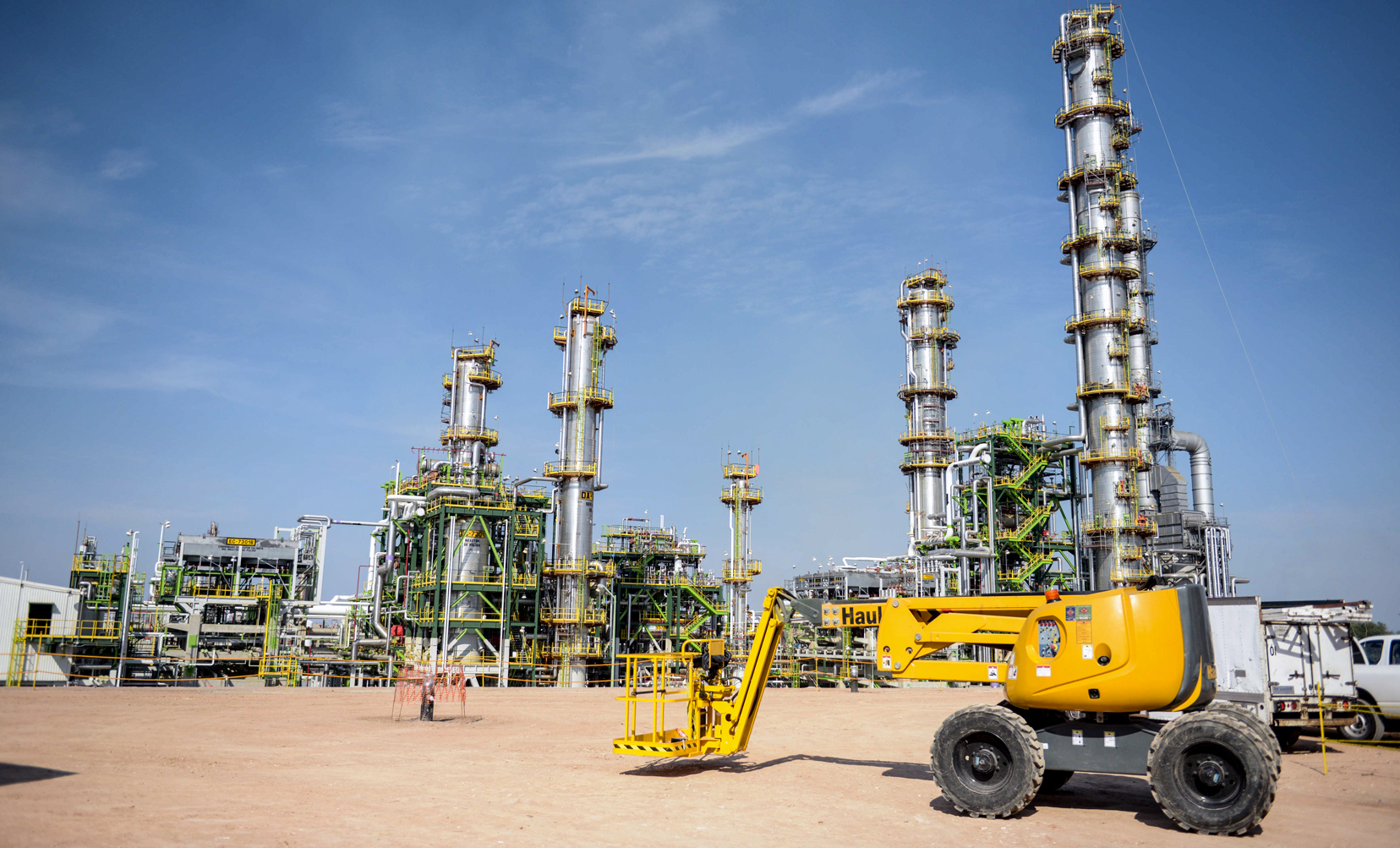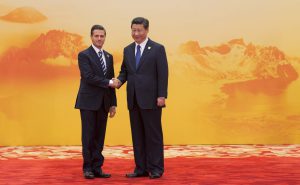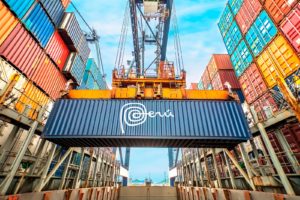President Andrés Manuel López Obrador is putting at oil the heart of Mexico’s energy sector and banking on it as an engine for economic growth in a plan that carries serious environmental threats and jeopardises the country’s climate commitments.
Keen to provide cheap gasoline and electricity, López Obrador (known as AMLO) plans to build a controversial oil refinery, upgrade six of state energy company Petróleos Mexicanos (PEMEX)’s existing refineries and maintain 50 hydroelectric plants, relegating wind and solar photovoltaic energy to secondary importance despite Mexico’s potential.
AMLO outlined the moves in his Plan to Strengthen the Energy Sector, launched earlier this year.
“First you should ask; what is the optimum point of oil investments…and the optimal electricity matrix?’ They should analyse which combination is the best for the country,” said Adrián Fernández, director of the Mexico Climate Initiative.
Fernández said the government lacks ideas and hasn’t justified why so much money goes into oil despite its environmental impact.
This year, PEMEX will allocate $2.5 billion pesos (US$132,000,000) to the construction of a refinery at the Dos Bocas port in the south-eastern state of Tabasco. The refinery would process crude oil and convert it into gasoline and kerosene as well as other derivatives and raw materials for the petrochemical and plastics industries.
2022
the year Mexico aims to stop importing gasoline
The government says that by 2022, Mexico will stop importing gasoline, most of which it mostly buys from the US. PEMEX aims to increase daily extraction from 1.7 to 2.4 million barrels of crude oil. Opponents argue that Mexico does not have enough light oil to refine and that exporting crude would be more profitable.
Oil for clean energy?
AMLO has said that oil will finance the transition to clean energy. Yet it seems more likely to delay it. A new refinery’s average life cycle is around 20 years and requires new infrastructure, embodying more carbon.
There is no environmental policy during this presidency. They have no idea about the issue or who will advise them
Among the five objectives listed for the refinery, none support renewable energy growth. All the while, AMLO has insisted that Mexico must maintain a flow of oil, what he calls a “lever for development”.
In recent years, PEMEX’s operations have slowed. In the first quarter of 2019, it extracted 1.66 million barrels of crude oil daily, 12% less than the same period the previous year. At the same time, it obtained 3.6 billion cubic feet of gas, compared to 3.9 billion in 2018, a near 7% drop.
According to María Eugenia Ibarrarán, director of the Xabier Gorostiaga SJ Environment Research Institute, AMLO’s plan fails to consider the energy sector’s environmental impact.
“A refinery is proposed but at no time a big push to renewables has been made. They keep putting gas in as clean energy, which is a big trap. There is no environmental policy during this presidency. They have no idea about the issue or who will advise them,” Ibarrarán told Diálogo Chino.
Much of Mexico’s hydrocarbon drive has been financed by China. In 2014, Mexico’s National Infrastructure Fund, national development bank Nacional Financiera, and the China Investment Corporation and China Development Bank Capital established the US$1.2 billion China-Mexico Fund.
World Bank private financing arm the International Finance Corporation manages the fund.
In energy auctions, China National Offshore Oil Company won an oil block in 2016. A China-Mexico consortium, which consists of Shandong Kerui Oilfield Service Group, Sicoval MX and Nuevas Soluciones Energéticas A & P, won three more in 2017.
Chinese firms have also invested in renewable energy projects but these investments pale in comparison to oil.
Dirty energy
AMLO’s plans also bolster the state-owned Federal Electricity Commission (CFE)’s capacity for electricity generation. The company is building and renovating plants to meet a demand that grows an average 3% annually.
On June 14, the energy ministry launched the National Electricity System Development Plan (PRODESEN). In it, CFE will install 18,880MW by the CFE between 2019 and 2025, equivalent to 27% of the country’s current installed capacity.
Over the next 15 years, Mexico expects to add over 29,000MW generated by combined cycle plants that burn natural gas and reuse the steam generated to produce electricity.
However, the government has suspended renewable energy auctions that were first opened in 2016. In 2018, solar energy, wind power, ‘cogeneration’ and combined cycle were the fastest growing sources. Yet, CFE will not build renewable plants, according to PRODESEN.
“What has to be done, but they are not willing to do, is to deploy large-scale renewables. The cost does not seem to matter to them,” Fernández said, emphasising that renewables are becoming increasingly competitive.
Fernández presented an energy transition plan to all 2018 presidential candidates at the National Autonomous University of Mexico (UNAM). He called for the massive deployment of renewable energies and the elimination of subsidies for fuel and electricity.
The AMLO administration has not adopted any of its proposals.
PRODESEN merely adopts clean energy goals stipulated in former president Enrique Peña Nieto’s reformist Energy Transition Law that outline targets of 25% by 2018, 30% by 2021 and 35% by 2024.
Jinko Solar Mexico, a subsidiary of the Shanghai-based China Jinko Solar, won three photovoltaic ventures totaling 188MW in renewable electricity auctions.
Far from Paris
The promotion of hydrocarbons also hinders Mexico’s likelihood of meeting voluntary emissions reductions goals.
How long will it take for this reality to explode in this administration’s face
In its Nationally Determined Contribution (NDC) submitted under the 2016 Paris Agreement, Mexico promised to reduce carbon emissions by 22% by 2030, avoiding the release of 151 million tonnes of carbon dioxide (CO2) into the atmosphere.
“This government has the imperative to fulfil commitments and be accountable for goals. In 2020 it will have to improve its ambition… it has no idea how to decarbonise the economy,” Fernández said, asking rhetorically: “How long will it take for this reality to explode in this administration’s face?”
Fernández predicted that Mexico – the first developing country to submit a climate plan to the UN – could become the first to abandon the Paris Agreement because of its policies. The country is way off course towards reaching its goals, he said.
This assessment is supported by Climate Action Tracker. Mexico will not meet its already insufficient reduction targets in 2020 and 2030 and will need to introduce additional policies, the watchdog concluded.
In 2016, Mexico emitted 446 million tonnes of CO2, according to the National Institute of Ecology and Climate Change. Electricity generation accounted for 133 million tonnes, the production of solid fuels 27 million tonnes, and oil refining 13 million tonnes.
Of the top 100 state and private firms that account for 72% of global industrial pollution, PEMEX ranked eighth in emissions between 1988 and 2015 with 16.8 billion tonnes of CO2, according to the 2017 Higher Carbon Issuers Database.
“A key indicator of the success of climate policies is generating fewer emissions. With these policies, I do not see where it will reduce them. It will have to improve,” Ibarrarán said.








